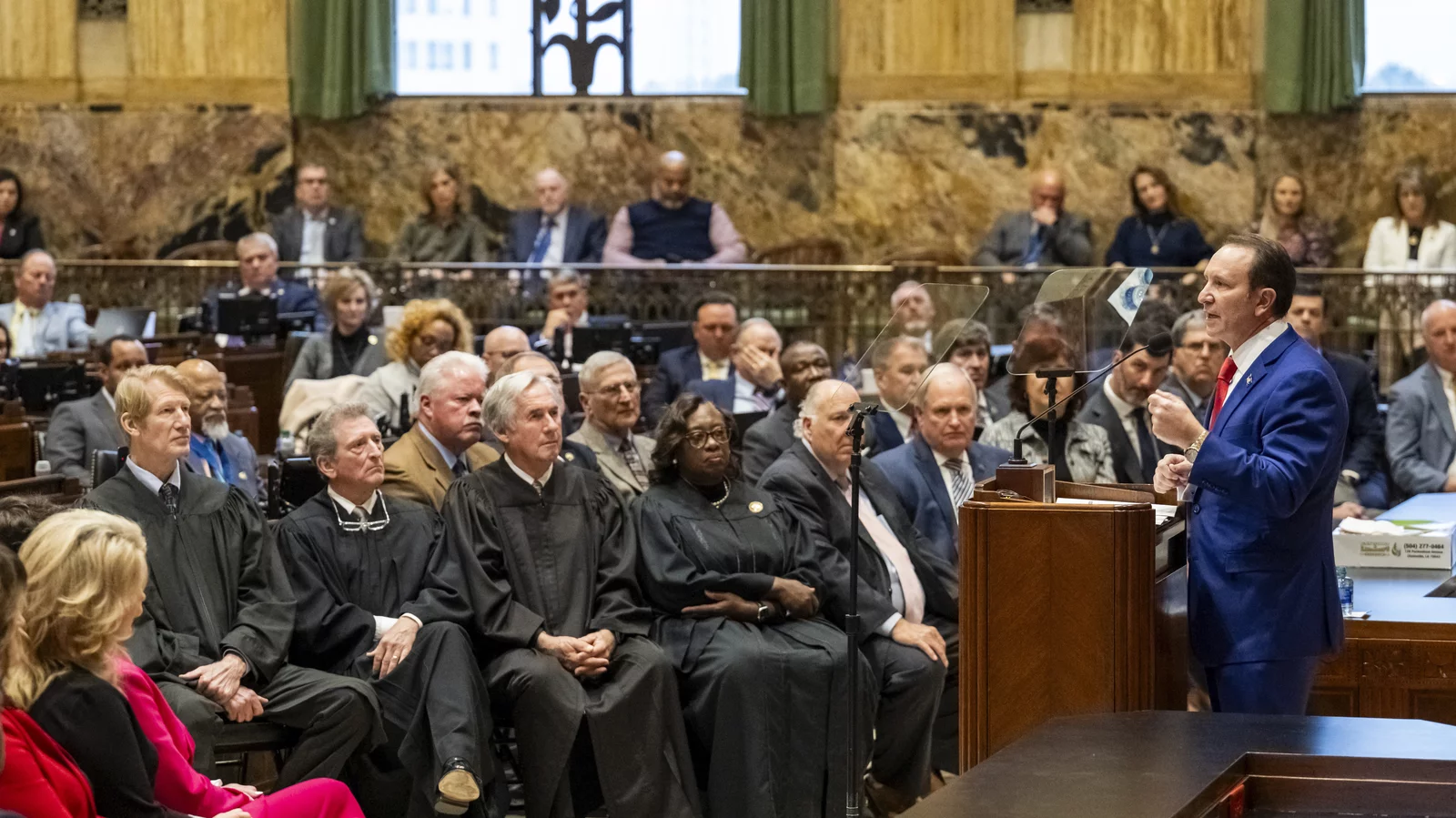By Molly Ryan
Louisiana has a new congressional map, with a second majority-Black district, after Republican Gov. Jeff Landry signed it into law on Monday.
The new map is a win for Black voters and likely brings an end to the state’s long-running legal battle over redistricting. It could also see Democrats gain another seat in Congress.
Redistricting the map was the focus of a week-long special session called by Landry on his first day in office. A federal court had given Louisiana’s legislature until Jan. 30 to redraw its map in compliance with the federal Voting Rights Act, forcing lawmakers to add a second majority-Black district.
Louisiana’s earlier map was one of several across the country that had been challenged in court for allegedly diluting Black voting power, leading to a political battle over the districts that has lasted for almost two years.
A federal judge will need to sign off on Louisiana’s new map.
In an address to lawmakers at the start of the special session, Landry urged them to put an end to that battle and pass a congressional map with two majority-Black districts.
“These maps will satisfy the court and ensure that the congressional districts of our state are made right here in this legislature and not by some heavy-handed federal judge,” he said.
In 2022, Louisiana lawmakers passed a map with one majority-Black district out of six, even though Black residents make up about a third of the state’s population.
A group of Black voters, concerned the map did not offer Black Louisianans fair representation, challenged the map in court.
Landry, who was then Louisiana’s attorney general, tried to end that litigation and preserve the 2022 map. But as governor, at the start of last week’s special session, he said the state had “exhausted all legal remedies” and would need to draw a second majority-Black district.”Once and for all, I think it’s time that we put this to bed,” he said.
Under the new map, Louisiana’s 2nd District, which encompasses much of New Orleans and surrounding areas, will have a Black population of about 53%. Democratic U.S. Rep. Troy Carter represents that district, which has been Louisiana’s only majority-Black district for several years.
Louisiana’s 6th District now stretches from parts of Shreveport to Baton Rouge and will have a Black population of about 56%. Republican Garret Graves, an ally of former House Speaker Kevin McCarthy, represents the 6th and risks losing his seat under the new map, which Landry supported over other versions.
Other proposals for a new congressional map, which were preferred by Black voting rights activists, would have impacted the 5th District, which covers northeastern and parts of central Louisiana. That seat is held by Republican Rep. Julia Letlow. Several Republican lawmakers said they wanted to protect Letlow’s seat because she is Louisiana’s only female representative in Congress and serves on the powerful House Appropriations Committee.
Lawmakers were also sure to protect the seats of House Speaker Mike Johnson and House Majority Leader Steve Scalise.
The developments in Louisiana echo a recent fight in Alabama, where a panel of federal judges in October picked a map for that state’s 2024 elections that includes a second district that increases Black political power.
Given racial polarization in voting, Democrats are likely to benefit from the new seats in Alabama and Louisiana.

